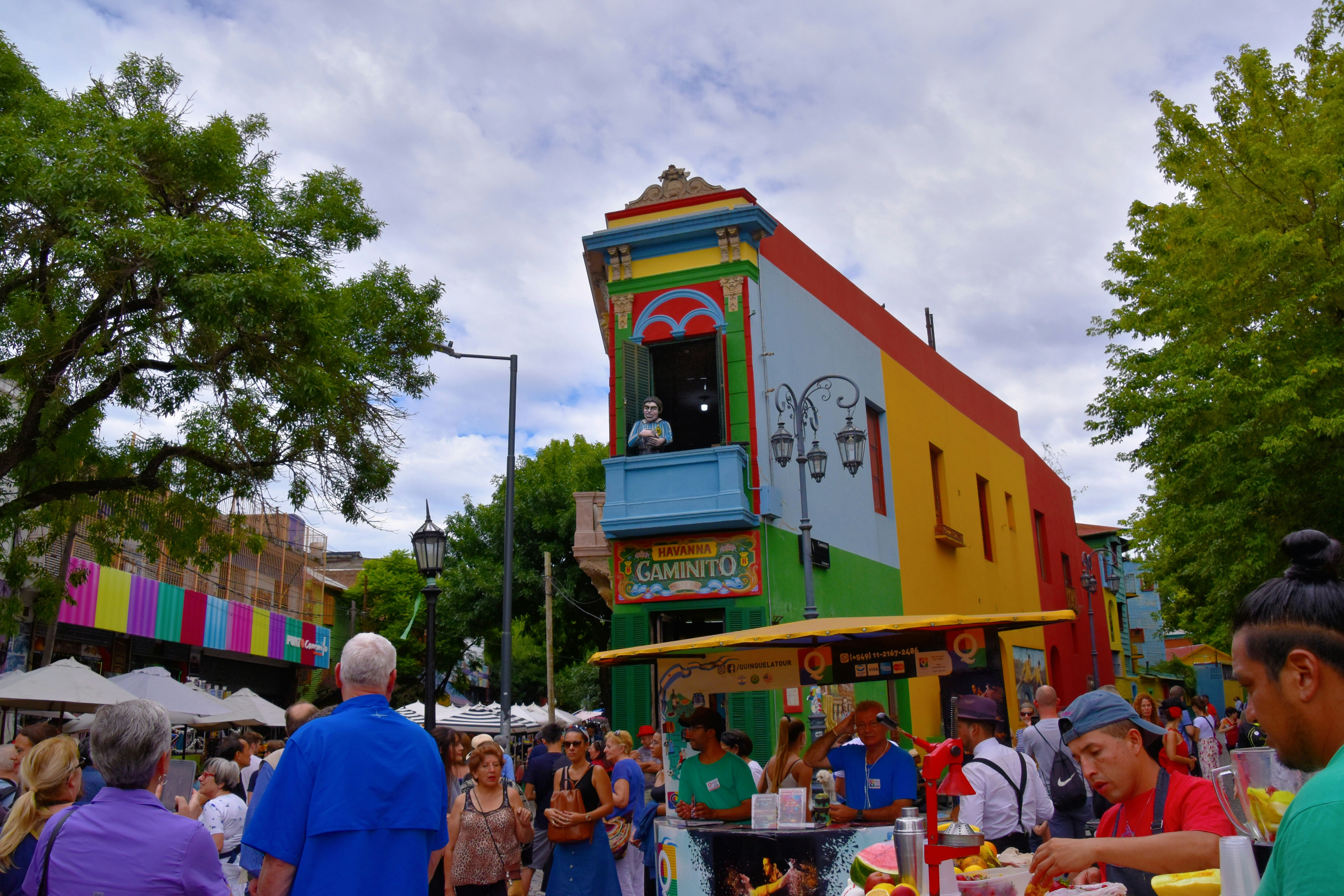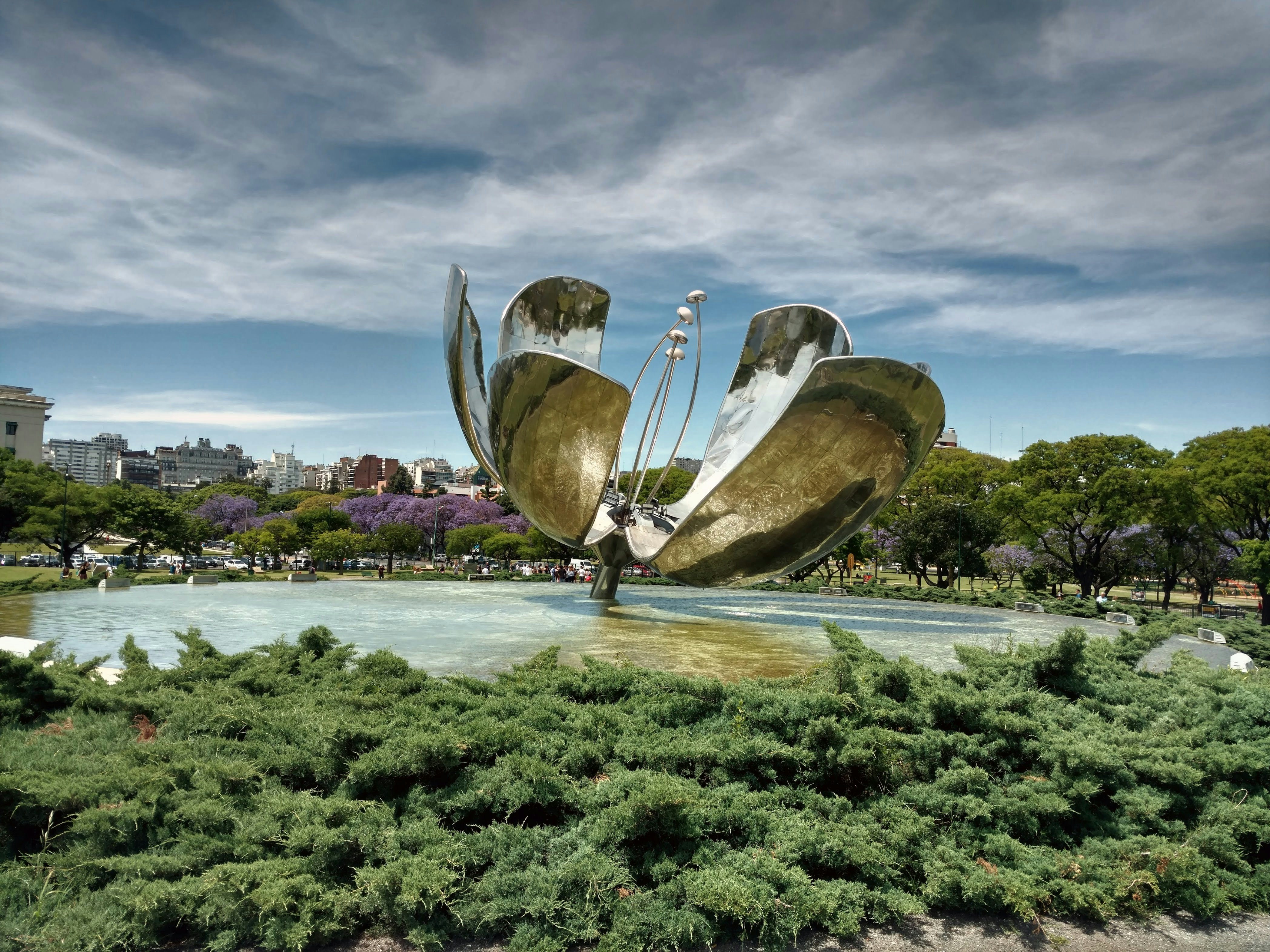
Curator’s statement
A city of contrasts, where modernism and history combine to surprise you. With a unique charm, its cuisine and culture will captivate you. From the grandeur of its avenues to the colorful streets of its traditional barrios, every corner tells a story. Get ready to experience the pulse of tango, the flavor of an authentic asado, and the elegance of its architecture. Here is a guide with the must-see of Buenos Aires City.
The Fora Difference
Book with Clarisa to access exclusive perks and experiences on your trip.
Killer perks
Free upgrades, spa credits and more—we got you
Personalized recs
Customized travel planning for your style
Insider knowledge
Expert advice from people who’ve actually been there
Where to stay
Unlock perks by contacting Clarisa to book your trip.
Day 1: Icons of the city: Avenida de Mayo, Obelisco, Avenida Corrientes & Teatro Colón

Casa Rosada, Buenos Aires
Let’s start the day by walking the 10 main blocks of the iconic Avenida de Mayo—Plaza Congreso to Plaza de Mayo—the oldest square in Buenos Aires, and the scene of some of the most important political events in Argentine history. Surrounding it are the Casa Rosada, the seat of the National Government, the Metropolitan Cathedral, and the National Historical Museum of the Cabildo and the May Revolution.
Along these 10 blocks, you’ll come across the historic Café Tortoni: founded in 1858, it’s the oldest café in Buenos Aires, steeped in history. Don’t hesitate to stop in and try the classic “churros con dulce de leche,” an Argentine delicacy. Also on the avenue, you can visit the Barolo Palace, a historic building inspired by Dante Alighieri’s Divine Comedy. If you’d like, you can take a guided tour of the interior of this majestic architectural masterpiece!
Now, I invite you to head off (you can walk for 20 minutes, take a taxi, or take an Uber) to the great icon of the nation’s capital: El Obelisco. And there, lose yourself among the countless theaters on Corrientes Avenue, the pedestrian Florida Street with its street performers, and the majesty of Galerías Pacífico, the city’s shopping and cultural center.
To round out this afternoon, visit the Teatro Colón, one of the most important opera houses in the world. Don’t miss the guided tour—it lasts 50 minutes, and is truly breathtaking—I highly recommend it!
And to end the day, I invite you to enjoy a classic Buenos Aires experience: a fugazzetta pizza at Güerrín, the most famous pizzeria in Buenos Aires. You won’t regret it!
Day 2: Vibrant neighborhoods: La Boca, San Telmo, Puerto Madero & tango show

Caminito, Barrio La Boca
On your second day in Buenos Aires, I invite you to enjoy the unique charm of the La Boca neighborhood, an open-air museum, in the morning. I recommend booking a guided walking tour to delve into the city's most colorful neighborhoods—immerse yourself in the origins of history, and experience tango, soccer, and porteño traditions.
If you like soccer, there’s another must-see stop: La Bombonera, the Boca Juniors stadium.
For lunch, my recommendation is to take a taxi or Uber to the San Telmo market for lunch. Surround yourself with unusual antiques, local flavors, and plenty of art—a highly recommended experience. To continue, I suggest you explore the city’s most prestigious residential, business, and tourist neighborhood: Puerto Madero. There, explore and photograph another landmark: Puente de la Mujer. Can I tell you something interesting? The bridge represents the image of a couple dancing the tango: the white mast symbolizes the man, and the curved silhouette of the bridge, the woman. Obviously, you can’t miss it!
And to end your day, I suggest nothing less than immersing yourself in an incredible tango experience: dinner and a show at Señor Tango. A first-class show that will give you a firsthand look into the culture of Buenos Aires (tickets must be reserved in advance).
Day 3: Recoleta's elegance, Palermo's green spaces & farewell Asado

Floralis Genérica, Recoleta
For this third and final day, I invite you to go for a morning walk in the city’s most picturesque and elegant neighborhood: Recoleta. Discover one of my favorite sculptures: the Floralis Genérica. It’s a flower-shaped sculpture with a hydraulic system and photoelectric cells that make it open and close depending on the sunlight—a true beauty.
And then, be sure to visit the iconic Recoleta Cemetery, the most visited in the city, declared a National Historic Monument. If you’d like, you can take a guided tour to see its numerous imposing mausoleums and vaults of Argentina’s most famous figures. And then the third must-see in this neighborhood: the National Museum of Fine Arts. A must for art lovers.
For this afternoon, I suggest you explore my favorite neighborhood in the city: Palermo. Lose yourself in the woods, sit and contemplate the beauty of the Rose Garden, and stroll across the bridges of the Japanese Garden. To close out your days in Buenos Aires, I suggest you try a delicious asado criollo at the capital’s most famous grill: Don Julio (don’t forget to book in advance!).
Need to know
Climate: I highly recommend visiting Buenos Aires in the spring. The temperature during this season is pleasant for exploring its avenues and parks and making the most of your time. You can also visit at any time of year, adjusting your activity schedule and clothing
Currency: Argentine pesos. Most businesses accept credit cards.
Language: Spanish. I recommend learning some basic phrases to communicate. Contact me and I’ll share them with you!
Tipping: Tipping is customary in Argentina, especially in restaurants and cafes. A tip of 10 percent of the bill is generally appreciated if you’re satisfied with the service.
Safety: Buenos Aires is generally a safe city, but like any large urban center, it’s wise to be aware of your surroundings, especially in crowded tourist areas or when using public transport. Keep an eye on your belongings, and avoid displaying valuable items openly.
Transportation: The city has an extensive public transportation network, including subways (subte), buses (colectivos), and trains, which are affordable ways to get around. Taxis and ride-sharing apps like Uber and Cabify are also widely available and convenient.
Electrical Outlets: Argentina uses Type I electrical outlets (three flat pins in a triangular pattern) and the standard voltage is 220V at 50Hz. Make sure to bring a universal adapter if your devices use a different plug type or voltage.

Travel Advisor
Clarisa Belardinelli

Get in touch with Clarisa
Did you like this guide? Reach out to customize and book your own experience. Or, just to chat about travel in general.
You can expect a response from Clarisa within 1–2 business days. You’ll also be subscribed to our traveler newsletter (you can unsubscribe at any time).
For more inspiration and insider recommendations, visit our Buenos Aires page.